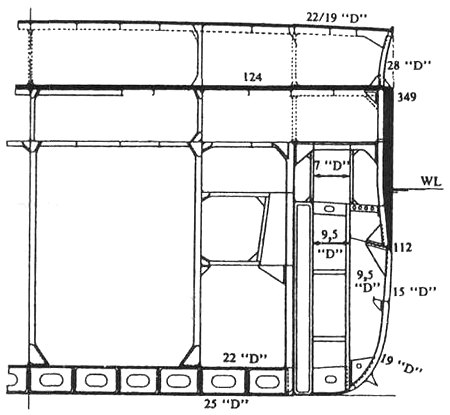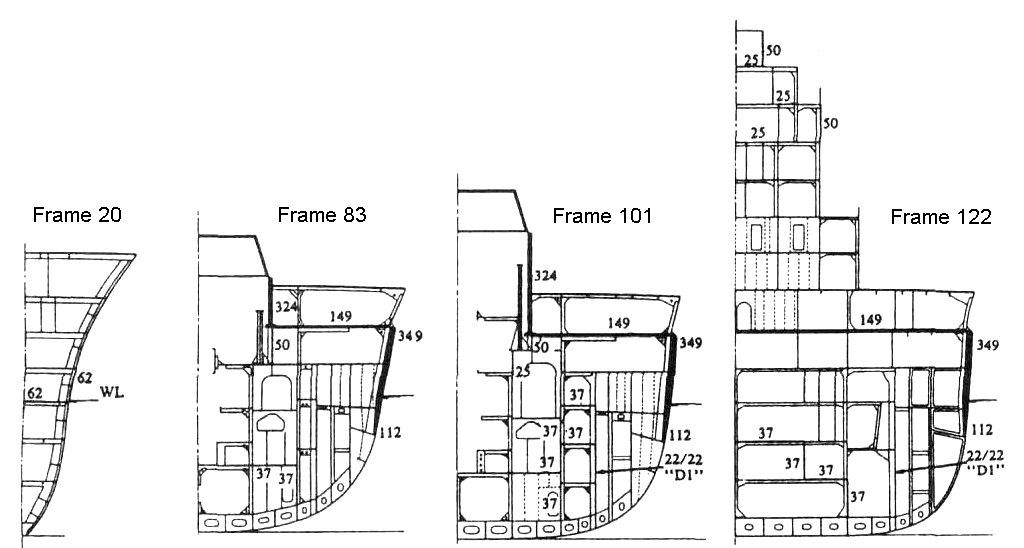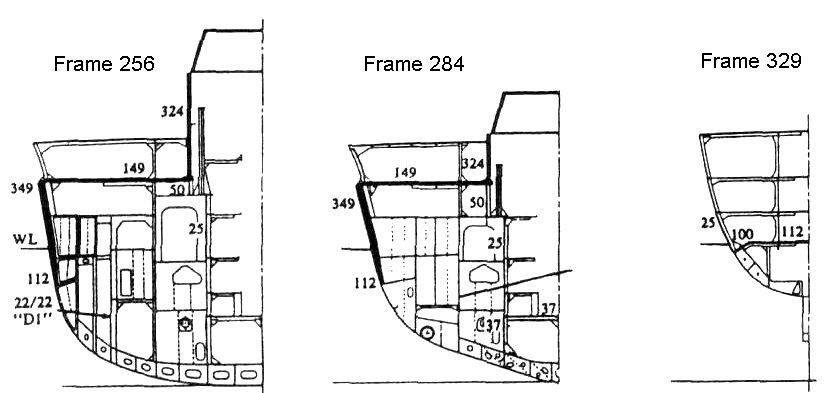Thanks to José I had to stop my reading on Friedman and pick up Raven & Robert`s "British Battleships" to learn about Vanguard. And, I must admitt, I`m begining to fall in love with this ship. Beautiful in a Hood way.
Vanguard was born from a Memo, dated March 3 1939 in which the Naval Staff looked a little bit concerned that their building program was not to be ready for the RN to stand both against Germany and Japan. The estimate they had for March 1944 was:
British Fleet capital ships in Home Waters: 10
Germany: 7 + 3 Deutschlands (5 new capital + 2 Schanhorsts)
British Fleet capital ships in Far East: 12 (2 Lions included + a lot of rusty aging ships)
Japan: 16 (including 4 Yamatos plus Nagatos, Kongos, etc.)
The Naval Staff knew that new 16" guns would be the critical path (in the building program) to have new ships ready. They expected them to be ready at the end of 1944 or early 1945. But they had in store 4 15-inch twin turrets from the Courageous and Glorious. Modernized they expected them to had some 25 more years.
The ship that would carry them, in the Memo, was estimated to be 40,000 tons and 30 knots without making any subtancial sacrifice in protection and would be a fully "armoured battlecruiser". (This is interesting because Vanguard would reach 30,3 knots with "just" 132,950 SHP whilst other contemporary new designs needed in excess of 200,000 SHP to reach similar speeds).
The protection was similar to the King George V except Vanguard had a thinner main belt and the splinter protection was more extensive. The 14 inch belt armour was capable of withstand a 15 inch AP shell up to 15,000 yards. The splinter protection was modified after Bismarck and PoW action at DS. Then, at that glorious episode Bismarck`s 15" did penetrated PoW below the belt but didn`t explode. So, in order to prevent splinters from such a hit, penetrating the magazines (
A-ha-ha! 
) it was approved, on August 15, 1941, to fit a 1 1/2" inch NC armour to the longitudinal bulkheads of the main and secondary magazines in several British ships: Vanguard, DoY, Anson and Howe (It`s interesting to research if such a provision was taken in other allied ships). That increased weight in 80 tons.
Another provision was taken fto prevent loss of buoyancy and water-plane area, forward and aft the citadel, as a result from splinter damage. So they added a 2 1/2" inch and 2 inch NC armour to the ship`s side, between lower and middle decks, forward and aft of the main belt extensions, and a 1 inch bulkheads within this area. This
"gave protection against bombs or shells exploding on the armoured-deck and rupture of the ship`s unarmoured structure above, by blast and splinters."
For underwater protection the system was similar to KGV Class, but as a result from PoW`s sinking the designers decided to increase the height of the longitudinal bulkheads
"that formed the three groups of compartments outboard of the protective bulkhead. Thus, instead of terminating at lower-deck level, they were extended up to the middle-deck, and provided greatly improved su-division behind the armour near the waterline."
Armour weights:
Belt........................4,666 tons
Bulkheads................ 516 tons
Barbettes.................1,500 tons
Main deck................4,153 tons
Lower deck (forward)... 362 tons
Lower deck (aft)........ 578 tons
Additional bulkheads... 75 tons
Conning tower.......... 44 tons
Director towers......... 31 tons
Splinter belt ends...... 218 tons
Oil jacket bulkheads... 1,375 tons
Splinter protection
for cordite handing
rooms.................... 626 tons
Funnel protection...... 52 tons
Splinter protection for
bulkheads between
lower and middle
decks...................... 443 tons
Protection rings.......... 80 tons
Armour gratings.......... 24 tons
Bullet proof protection
for bridges................ 110 tons
Protection to 5,25 inch
turrets.................... 17 tons
Armour backing......... 40 tons
TOTAL: 15,000 tons
So far, this is the information that regards the armour of this incredible and beautiful vessel, the last BB ever built.
Kind regards.







